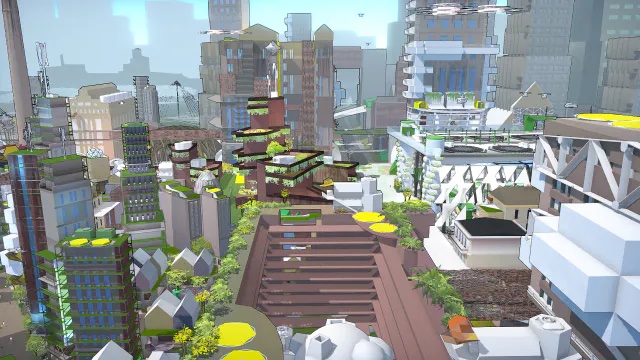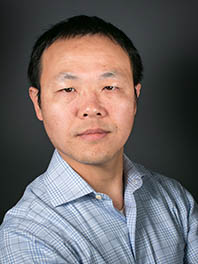
Tang Brings the Future in 3D to CEE Students with Mega City 2070
By Civil and Environmental Engineering News
As we look to the future, this much is certain: the cities of today will not be the cities of tomorrow. By 2070, many cities will hold massive populations while facing limited energy resources and evolving climate change impacts. To ensure quality of life and wellbeing, buildings, outdoor spaces, and entire neighborhoods must be reimagined sooner rather than later, with civil engineers creating and deploying solutions that keep individuals and communities safe and healthy.
“We need to think now about making designs flexible and adaptable to handle these challenges,” says CEE Associate Professor Pingbo Tang. “If civil engineers don't look at what the climate, population, and energy sources will be in 50 years, what we build will become obsolete very quickly, leading to future expense and waste.”
These considerations are at the forefront of Tang’s Building Information Modeling for Engineering, Construction, and Facility Management graduate course, where this year’s students participated in a pilot program of software called Mega City 2070.
Created by the American Society of Civil Engineers (ASCE) based on extensive research, Mega City 2070 immerses users in a realistic 3D model of a city home to 50 million people in the year 2070. As students tour this futuristic and interconnected built environment, they can delve into articles, reports, videos, and discussions regarding transportation; construction and materials; energy and utilities; structure and architecture; and water, waste, and environment.
 “By observing the systems and structures in this platform, students see the very big challenges that cities with such high populations will face,” says Tang. “Looking at these animated and realistic scenarios helps them visually think through different situations, potential solutions, and what technology will work in a real-world city.”
“By observing the systems and structures in this platform, students see the very big challenges that cities with such high populations will face,” says Tang. “Looking at these animated and realistic scenarios helps them visually think through different situations, potential solutions, and what technology will work in a real-world city.”
In Tang’s course, teams of students first spent time exploring Mega City 2070 before selecting and analyzing an infrastructure case study in the city and its related technical challenges. Students then identified opportunities to address those problems using various sensing and computing technologies.
